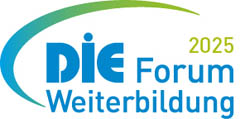A Tool to Facilitate the Management of Web Content
 Kumasi (GH), May 2010 - At Ghana's Kwame Nkrumah University of Science and Technology, three highly competent staff members have developed a new Open Source Content Management System called KAN. Robert Kabutey Okine, Francis Adu-Gyamfi, and John Serbe Marfo are responsible for this achievement and will demonstrate it at eLearning Africa. In the following interview, they have been kind enough to explain to CHECK.point eLearning what's new in KAN.
Kumasi (GH), May 2010 - At Ghana's Kwame Nkrumah University of Science and Technology, three highly competent staff members have developed a new Open Source Content Management System called KAN. Robert Kabutey Okine, Francis Adu-Gyamfi, and John Serbe Marfo are responsible for this achievement and will demonstrate it at eLearning Africa. In the following interview, they have been kind enough to explain to CHECK.point eLearning what's new in KAN.
What was your intention in developing a new Open Source tool?
Robert Kabutey Okine: There was no specific initial intension to develop something really new; it was something that was born out of simple tweaks and fixes. The base code for KAN was obtained as we constantly worked to improve the current KNUST website. As more and more work was done, the system just developed on its own, gradually becoming what it is.
After a successful total revamp of the KNUST website and the subsequent jump in Webometrics World University Rankings because of the increased content and ease of use of the system, the next step was to clean up the code base and make it available for others to use. It immediately gained acceptance amongst many of the developers in the area because it was light and easy to use. We decided to make the project open source and rebranded the system as KAN, which in Twi - a Ghanaian language - means "First").
What were the special interests and needs that had to be considered?
Francis Adu-Gyamfi: The main feature or interest pursued was simplicity. The aim was to produce a CMS that was immediately usable with little or no knowledge of web standards or technologies. It had to be a tool that could facilitate the management of web content on the site with simple-to-use sections that had straightforward titles and functionalities.
Other CMSs tend to be geared towards more technical users in their use and terminology. KAN focuses on creating Content Managers (or content management sections) that are specific to the content being managed and not generalized in order to fit all situations.
Next, the CMS needed to be able to handle the content of several different departments (or sub-sites) in a simple manner. It needed to be straightforward in creation, management, and removal. All this needed to be done using a simple database structure and a simple-to-use theme-management system.
What are the differences in comparison with other Open Source CMS?
John Serbe Marfo: It is said that a good UI design exposes very little of the complexity of the code to the users. That is one way in which KAN differs from other Open Source CMSs. We strive to keep the interface as simple and straightforward as possible. The CMS must simply work - because our target users are "normal" office workers who only need to publish some simple content without having to know what an HTML tag is.
Secondly, most other Open Source CMSs support just a single-site installation, but KAN was built from the ground up specifically for multiple-site management using a single domain and database. Each sub-site is a fully fledged site and can be managed as such with the KAN Content Management section.
However, just like many other CMSs, KAN supports the addition of custom code using a feature we term "Components". Components can either be used as widgets (included in a page) or used as full stand-alone pages. This enables the site to preserve the use of its theme while being able to access other database tables that are not part of the original KAN database schema.
With respect to user management, KAN keeps it simple with just four user levels: Super, Administrator, General Content Editor, and Site Specific Content Editor. Other CMSs offer many more user Levels, which although useful, we believe to be a bit much. These user levels determine what each user can do and what site they have access to. Again, we try to keep it simple.
How many people are involved in the Open Source Development Community?
Francis Adu-Gyamfi: The current community behind KAN is small and consists mainly of developers in KNUST and one KNUST graduate. The source has been made public, but we've yet to receive committers to the project.
What kind of feedback have you had so far?
Robert Kabutey Okine: A lot of experience has been gained in working on the source code for KAN, particularly with respect to how the code works on a Linux environment due to folder restrictions and all. This is mainly due to the fact that almost all development is done on Windows, where that is not the case.
Also, we've learned that re-inventing the wheel is hard, but worth it. Most of the basic things we strive to include have already been done in other CMS platforms, but the more we re-implement them, the more we learn that we can do them better.
The code base for KAN is not perfect, and currently just at version 1.0, we certainly have a long way to go before we have a system that competes squarely with the current popular Open Source CMS platforms.








